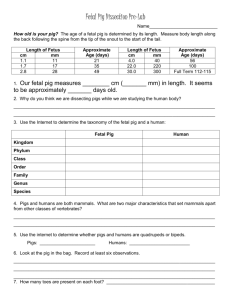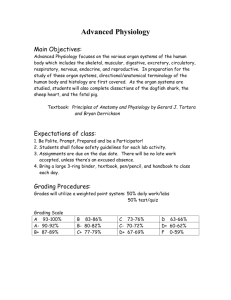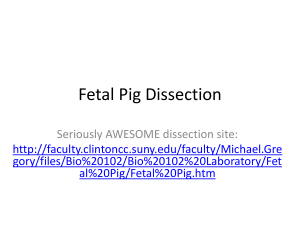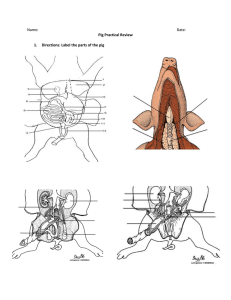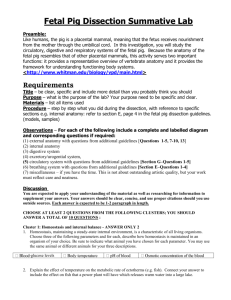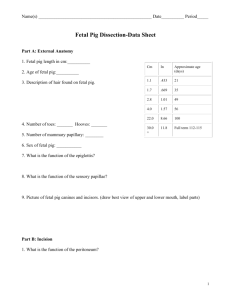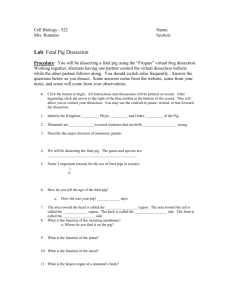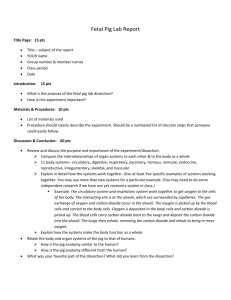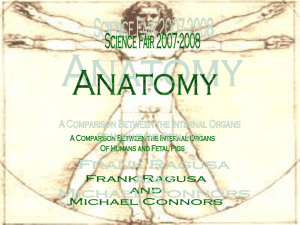Exercise 29 – Dissection of the Fetal Pig
advertisement
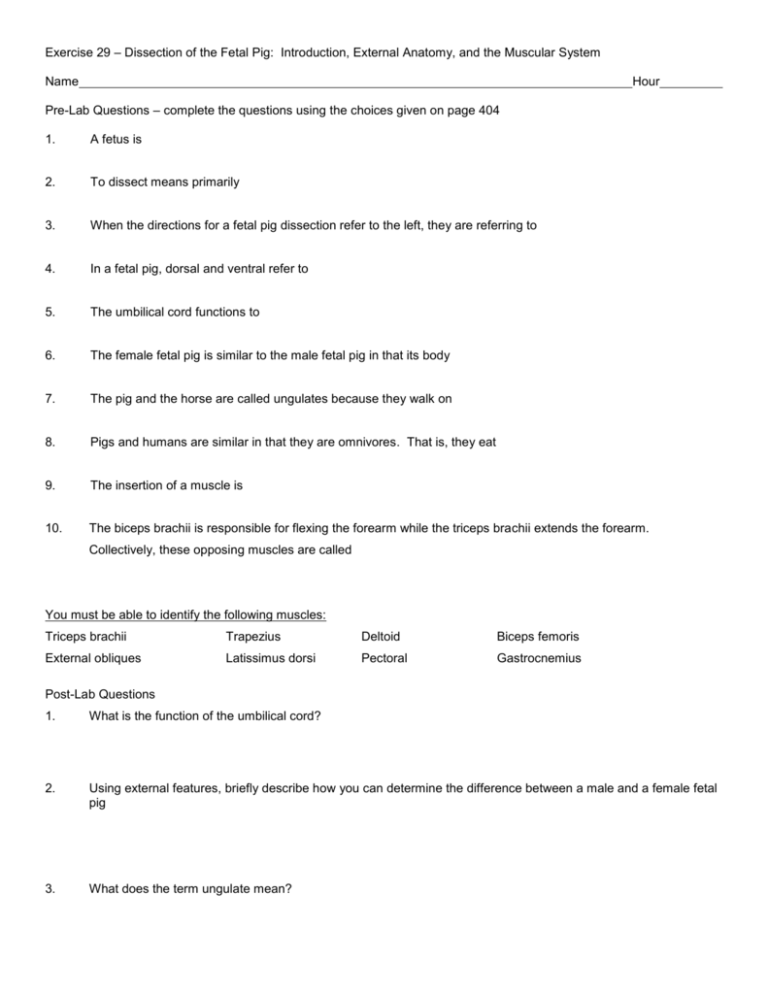
Exercise 29 – Dissection of the Fetal Pig: Introduction, External Anatomy, and the Muscular System Name Hour Pre-Lab Questions – complete the questions using the choices given on page 404 1. A fetus is 2. To dissect means primarily 3. When the directions for a fetal pig dissection refer to the left, they are referring to 4. In a fetal pig, dorsal and ventral refer to 5. The umbilical cord functions to 6. The female fetal pig is similar to the male fetal pig in that its body 7. The pig and the horse are called ungulates because they walk on 8. Pigs and humans are similar in that they are omnivores. That is, they eat 9. The insertion of a muscle is 10. The biceps brachii is responsible for flexing the forearm while the triceps brachii extends the forearm. Collectively, these opposing muscles are called You must be able to identify the following muscles: Triceps brachii Trapezius Deltoid Biceps femoris External obliques Latissimus dorsi Pectoral Gastrocnemius Post-Lab Questions 1. What is the function of the umbilical cord? 2. Using external features, briefly describe how you can determine the difference between a male and a female fetal pig 3. What does the term ungulate mean? 4. What is meant by the origin, insertion and action of a muscle? 5. What are antagonistic muscles? 6. What is the difference between a sagittal plane, a frontal plane, and a transverse plane of the body? 7. a. What is meant by the type of locomotion referred to as plantigrade? b. What is meant by the type of locomotion referred to as digitigrade? 8. Identify these external features of a fetal pig: a. e. b. f. c. g. d. h.

